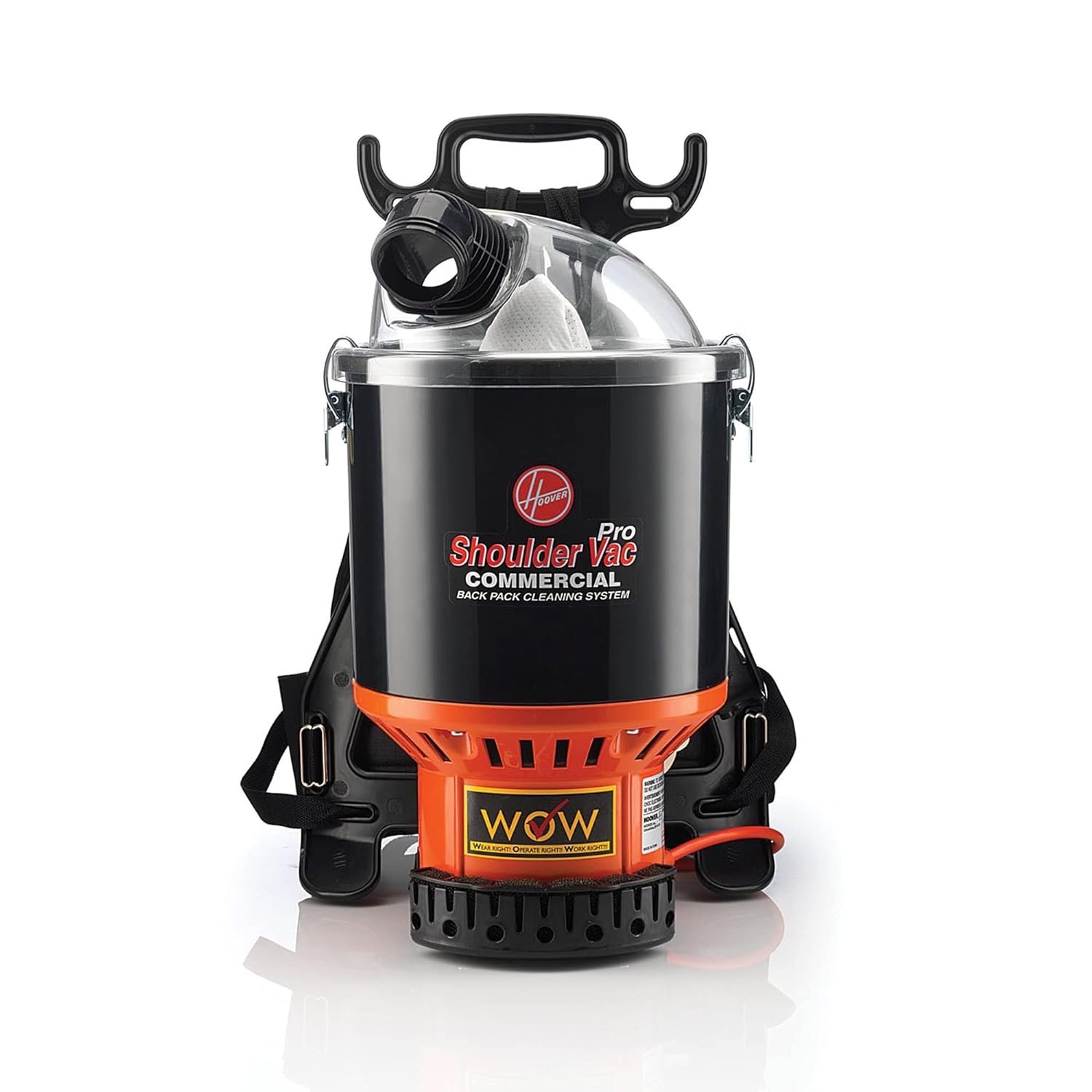Vacuuming Tips for Different Floor Types
Vacuuming is a task that can get you the most impact in the least mount of time, when it comes to home cleaning. Floors are the largest continuous surface throughout a space and harbor the most dust, dirt, debris, and bacteria. If you have limited amount of time (or attention span), make this task your priority.
Depending on the type of vacuum(s) you own, there might be a better approach to your vacuum method. Whether that be a vacuum upgrading your vacuum to something that works better for the specific surfaces in your home, or using different settings. This article will go over:
🛠️ tools + equipment you’ll need
⭐️ different types of carpets + floors
⚡️ best vacuum method/practices per floor type
First, let’s talk vacuums.
Carpet Vacuum
A carpet vacuum will have a beater bar on the underside, where the vacuum runs over the floor. This beater bar function is important. The beater bar has a brush that runs over the surface of the carpet to help lift and remove dirt + debris from carpet fibers.
While I’ve seen a lot of vacuums that have all the bells and whistles to it (actually, too many in my opinion, which takes away from the core functions) — a good carpet vacuum will have a low pile setting and a high pile setting. Recommendations for carpet vacuums.
Oreck Commercial Upright Vacuum
Upside: It’s lightweight, powerful, and easy to use.
Downside: It’s not cordless, so cord management is a factor with use.
Upside: It’s cordless and is easy to bring with you all around the house. This makes for quicker clean ups.
Downside: It’s “top heavy”, which makes more work on the arms to push the vacuum back and forth. If you have a lot of carpet, I recommend a “bottom heavy” vacuum where the motor is housed closer to the ground, which gives more propelling power.
Hard Surface Floor Vacuum
A hard surface floor vacuum is a vacuum that replaces the function of a broom. Overall, this helps decrease dust. Rather than using a broom that kicks dust up into the air, a hard floor vacuum removes the dust/dirt/debris from the ground. Essentially, it contains the dust vs. pushing the dust around.
The best hard surface floor vacuum that I’ve ever used, actually has no beater bar. Reason being, it creates better suction on a hard surface without the airflow being restricted.
Upside: It’s powerful, when used correctly. It has a number of attachments, including the “wand”, which is a long stick that runs over surfaces on the ground. It also has a dusting brush attachment to help remove dust from surfaces.
Downside: It uses a cord, which requires cord management while vacuuming. It’s also a 10lb backpack. If you have any low back issues this might not be the best piece of equipment for you.
Upside: It’s cordless and is easy to bring with you all around the house. This makes for quicker clean ups.
Downside: There’s a beater bar on the bottom and the suction isn’t quite as good as the Hoover Backpack vacuum.
Now, let’s go into the different types of surfaces that you’ll come across when vacuuming…
High Pile Carpet
High pile wall-to-wall carpet is beautiful, lush, and soft on the feet. There can however, be an art to vacuuming high pile carpet. Dirt and debris more easily hides at the base of a carpet surface, so you’ll need a good vacuum with a beater bar that’s adjustable and has different settings.
On some vacuums, there’s a setting for high pile rugs where the suction is “less” and raises the vacuum up and off of the floor slightly so that the high carpet pile doesn’t get caught in the beater bar. Otherwise, a high suction beater bar vacuum can be rather difficult to push across a high pile carpet.
Another tip ⚡️ if your vacuum doesn’t have a high pile function: Lift the vacuum up and off the ground and place it at the furthest point away from you. Then, pull backwards. Do this for each stroke as you vacuum. Ergonomically speaking, pulling vs. pushing can utilize your body weight a little more.
Low Pile Carpet
Wall-to-wall low pile carpet is the easier type of carpet to vacuum. However, there's some need to know techniques when it comes to this carpet type.
Since dirt, debris, and crumbs tend to sit on the surface, it’s important to use a vacuum with high suction or “low pile” setting. This high suction will ensure that debris is vacuumed up on the first stroke. Otherwise, a low suction vacuum might end up pushing dirt and debris back into the areas that you’ve already vacuumed.
Small Area Rugs & Runners
Small area rugs can be vacuumed, but doing so might prove to be a challenge. This will depend on the material your rug is made out of and how powerful your vacuum is…the more power, the more challenging…in this instance. Most small area rugs are best shaken out, outside. You can also throw them in the wash (again, depending on the fabric).
You can also try a technique where you place the vacuum closest to you on the rug and push it forward .Then, lift the vacuum up and away once you get to the end of the rug. This will prevent the vacuum from “eating” the rug and getting stuck in the beater bar.
Large Areas Rugs
Large area rugs are a great centerpiece for the living room or a bedroom. They usually can be vacuumed with the same process that you would follow for wall-to-wall carpet. The only difference is that dirt and debris can sometimes get trapped underneath the edges of the rug.
An occasional task: Vacuum the top part of the rug and then fold the rug in half (if larger, fold in quarters). This will expose the underside of the rug. The underside of the rug (and the floor) can be vacuumed with a carpet vacuum and/or a hard surface floor vacuum. Move any furniture that’s on top of the rug, as needed.
Carpet Fringe
There are a few ways to clean the fringe on the end of area rugs, but one thing is for sure: you don’t want to run a beater bar over these. A beater bar will “eat” the fringe or get stuck inside of the beater bar roll. Here’s two techniques that you can use:
Run the hose attachment over the fringe with your Hoover Backpack vacuum or Dyson (no beater bar). Strategically run the hose over each area of the fringe to remove particles.
🪥 Try this hand held carpet rake. It’s basically a comb for the fringe on your area rug.
Pet Hair
Sometimes pet hair doesn’t fully extract from certain rugs, depending on the material it’s made out of. A special tool can come in handy in this instance. Bonus, this tool can be used for pet towers, furniture, and other fabric upholstered surfaces.
Uproot has a small handheld tool OR they also have a larger tool with a telescopic handle, so you don’t have to lean over or be on your hands and knees to get the job done.
Hard Surfaces
Lastly, here’s some tips on vacuuming hard surface floors. This will include floors such as wood, laminate, tile, marmoleum, linoleum, marble, and so on.
When using your hard surface floor vacuum, such as the Hoover, ensure there’s proper suction. Run the wand perpendicular (flat/flush with the floor) vs. at an angle. This will help fully lift dust and debris particles. If there’s a larger piece of debris, lifting the wand at an angle temporarily, however, can help with moving the larger debris inside of the suction area.
Even if a surface doesn’t “look” dirty, I recommend running the wand over every area so that even the smallest dust particles are lifted.











